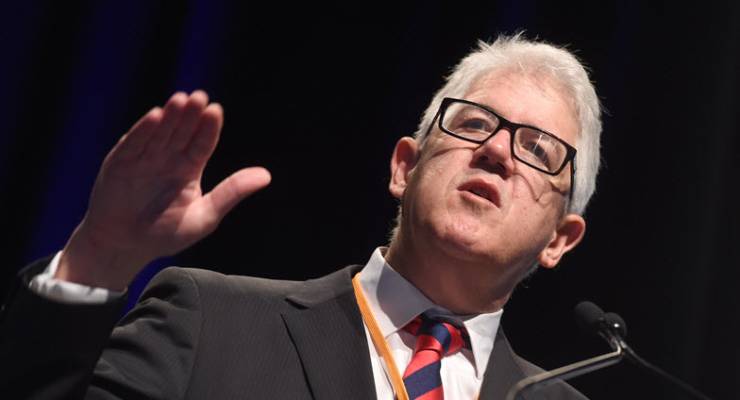
Departing Minerals Council of Australia head Brendan Pearson
In one of the more improbable moments of our peculiar economic times, it turns out you can be too pro-minerals for the Minerals Council of Australia. The head of the MCA, Brendan Pearson, has moved on after the council’s biggest member, BHP, very publicly distanced itself from Pearson’s relentless support for coal.
BHP is currently embarked on a big campaign to repair a corporate image badly soiled by constant tax avoidance, a dam disaster that killed 17 people in Brazil, bribery allegations and the trashing of $10 billion in shareholder wealth through dud investments. As part of this, last week BHP backed a Clean Energy Target and cleared its throat about continuing membership of the MCA. Within days, Pearson was gone. Easy decision, really — which would you prefer to lose, a CEO or your biggest member?
But what might be lost in the focus on BHP is that the Minerals Council has become increasingly embarrassing as a lobby group. Just this year alone, the council has:
- Launched a campaign to call for industrial relations reform in mining despite independent data showing massive productivity growth in mining and the sector having less than half of the wages growth of the private sector;
- Launched a campaign for nuclear power in Australia just as a major new nuclear power plant was being abandoned in the US; and
- Launched yet another coal campaign — although this time they avoided using hard figures after Crikey busted them in 2014 for inflating the number of coal miners.
Don’t be too upset for Pearson, though. Non-senator for coal Matt Canavan has called for the boys from the black stuff to look after their man — echoing Tony Abbott’s demand before the last election that the mining industry find a job for Ian Macfarlane, which they duly did. As the Good Book suggests, we expect Pearson will be welcomed into the lobbyist afterlife by his coal masters with, “Well done, good and faithful servant!”








Too pro-minerals? First, technically, coal isn’t a mineral.
Second, there was nothing particularly ill-starred about advocating for nuclear power in Australia given 10 GW of it (worth far more to electricity production than the equivalent in wind or solar) added to global capacity in each of the past two years.
But yes, the MCA has been missing a trick. As BHP have no doubt twigged, renewables rollout at anything like the scale envisaged by many will require a lot more mining.
Actually 54GW of wind was installed in 2016 http://www.gwec.net/wp-content/uploads/2017/04/4_Top-10-new-installed-capacity-Jan-Dec-2016.jpg
Fix the spent fuel poisons and then talk to us about nuclear plants. Nobody is building the things anymore and we have all heard about “too cheap to meter” rubbish from previous generations.
Not that poisonous, but anyway, done: https://www.theatlantic.com/magazine/archive/2017/10/what-lies-beneath/537894/
Or, preferably, re-use: http://www.nationalgeographic.com.au/engineering/can-reusing-spent-nuclear-fuel-solve-our-energy-problems.aspx
“Nobody is building the things anymore” OK, you just saw the word ‘nuclear’ and hit the knee-jerk response button without reading any more, didn’t you? Read my comment again. China is punching them out hand over fist.
It’s not an animal or a vegetable (anymore!) so its a mineral!
Yes, nuclear represents a direct threat to BHP’s coal and gas production. Coal-fired steam in the first instance. However, the article went further, sketching the benefits of SMRs, the small, factory produced reactors that have the potential for a mass rollout.
The advent of electric vehicles will eventually require a massive rollout of electric generation. Gas turbines and SMRs will compete to provide a rapid increase in heavy duty baseload.
You seem to overlook BHP’s ownership of Olympic Dam, one of the largest (if not the largest) uranium deposit known.
The profit at Olympic Dam lies in copper. The minority element there is uranium, part of an inexhaustible resource. One tonne of uranium would displace a million tons of coal, if you would let it. Now which would you prefer, a million tons of CO2 in the greenhouse, or one tonne of fission products, buried deep underground?
Worse in my view than the 17 out of nearly 7,000,000,000 humans on the planet that it killed were a number of species forever wiped from the planet by this disaster and ecosystems irreparably damaged. The permanent loss to the planet apparently isn’t that newsworthy.